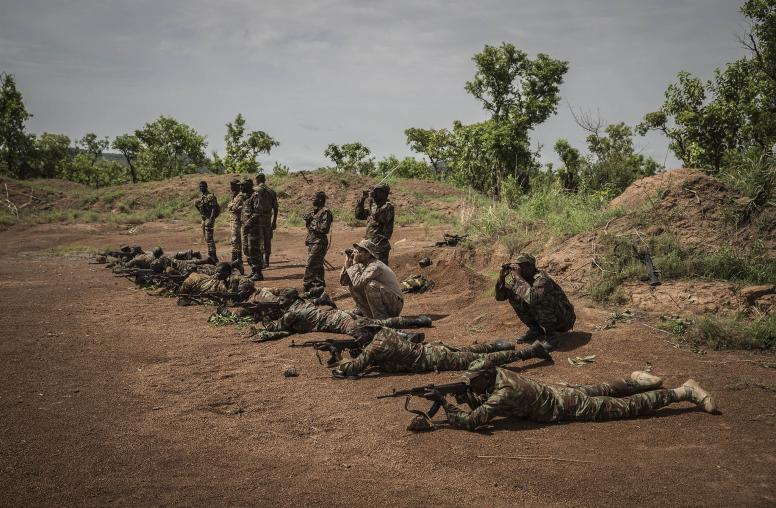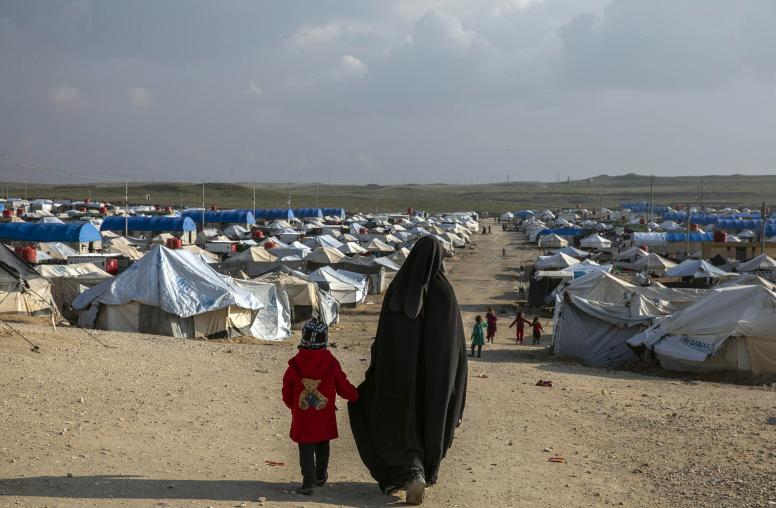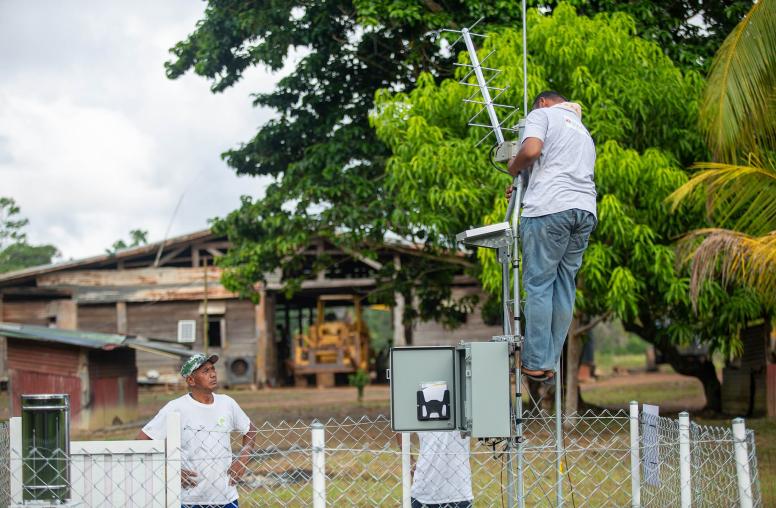Conflict and Extremist-Related Sexual Violence
An International Security Threat
As extremist groups in the Middle East and North Africa perpetrate sexual violence against women as part of their campaigns to further their interests and propagate fear, scholars are reaching a deeper understanding of the ways in which sexual violence, before, during, and after conflict, arises from a complex pattern of political, military, social, and economic factors. International actors can draw from this work to craft responses that better assist survivors and hold perpetrators accountable.
Summary
- The recent use of sexual violence by violent extremist groups, particularly Daesh (or ISIL), has received international attention. The violence resembles the use of sexual violence by state military forces and other armed groups in the past, who have used it to further their interests and propagate fear.
- Scholars researching conflict-related sexual violence have begun to uncover the complex patterns of political, military, social, and economic factors that lead to—or effectively prevent—such violence. Policymakers and members of civil society can make use of these findings to develop policies that assist survivors and hold perpetrators accountable.
- States and international organizations seeking to combat conflict-related sexual violence, including sexual violence committed by extremist groups, should seek out best practices among established and emerging political, legal, and operational initiatives.
- Efforts aimed at combating sexual violence should account for how women and men make sense of their own political and social identities, and the degree to which these understandings may inhibit or promote this particular form of violence. Strengthening international legal mechanisms to adjudicate perpetrators sends a strong message that sexual violence cannot continue with impunity. Domestic and international forces can receive training on dealing with sexual violence and give women the opportunity to serve in military and police institutions.
About this Brief
This Brief was prepared by members of the Missing Peace Young Scholar Network and supported through the partnership between USIP; Human Rights Center, UC-Berkeley Law; PRIO; and WIIS. Formed in 2013, the network comprises early-career researchers from a wide range of academic backgrounds committed to understanding and ending sexual violence in war. Members have met annually at USIP, most recently for a workshop in June 2015, to examine the current state of our knowledge and identify paths for future research on sexual violence in war. Kerry Crawford, Nicole Gerring, Sabrina Karim, Chloé Lewis, Clemence Pinaud, and Caroline Sarkis— network members—collaborated to write this Peace Brief based on insights from their research on topics related to sexual violence. Dr. Kerry Crawford is an assistant professor of political science at James Madison University.
Introduction
Conflict-related sexual violence destroys lives and destabilizes communities, making it an issue that concerns people of all genders. In June 2008, the United Nations Security Council recognized conflict-related sexual violence as a threat to international peace and security.1 Sexual violence is not inevitable in armed conflict, and it is not always used as a weapon. Over the past year or more, the use of sexual violence by violent extremist groups, particularly Daesh (or ISIL), has received more international attention, as the violence bears much resemblance to the use of sexual violence by other armed groups who have used it to further their interests and propagate fear.
Despite the graphic accounts of sexual violence that accompany discussions of ISIL’s tactics, as well as those of other armed groups in conflicts worldwide, it is important to acknowledge that there is significant diversity in the motivations, identities, and organizational structure of the groups and individuals that perpetrate sexual violence. Research shows that many armed groups do not use sexual violence as a weapon and some groups actively work to forbid combatants from perpetrating rape and other forms of sexualized violence.
Gender Inequality and the Economics of Sexual Violence
When considering the causes of conflict-related sexual violence—whether or not violent extremists are involved—it is important to reflect on the social, legal, and economic context in which armed actors and civilians live. Ideas about the proper status of women and attitudes regarding prescribed gender roles affect interpersonal, familial, and social relations on a daily basis, before, during, and after armed conflicts. Gender attitudes can manifest themselves in discrepancies between legal protections for women and men, as well as less physical security, fewer economic opportunities, and higher poverty rates for women than men. Scholars also have found a connection between the status of women within a state and that state’s propensity for violent conflict: States with high gender inequities take part more often in violence—such as initiating aggression in disputes with neighboring countries—than more gender equitable states.2
Through studies of armed groups and interviews with perpetrators of sexual violence, scholars researching conflict-related sexual violence have begun to uncover the complex patterns involving power, peer-driven affiliation, and gender inequalities that underlie it. Sexual violence, as well as other forms of physical insecurity for women (e.g., domestic abuse, marital rape, and forced marriage) are key indicators of gender inequality within a society. Gender attitudes that privilege limited or have violent notions of masculine norms also affect a country’s treatment of lesbian, gay, bisexual, transgender, and queer communities. As cases of violent extremism have arisen, scholars have begun to document how extremists use tactics of terror that rely on subjugating women and girls, including sexual slavery and child marriage.
Sexual violence also has economic dimensions that are important to examine. Recent cases of sexual violence in armed conflict and among violent extremist groups show that sexual violence can be associated with financial incentives. In Islamic State–run slave markets, women are sold into sexual slavery in exchange for a pack of cigarettes. The trafficking of women in armed conflict and their use as sex slaves and camp followers—to the financial and military profit of the violent extremists and armed groups who force them into it—is being documented daily. The violent commodification of women and girls is an essential element to the business of extremist groups in the Middle East and Africa.
Responses to Sexual Violence
States and international organizations seeking to combat conflict-related sexual violence, including sexual violence committed by extremist groups, have several options available to them. International responses generally fall into three main categories: political responses, legal responses, and operational responses.
Political Responses
U.S. and foreign policymakers must consider how domestic and foreign policies affect the status of women. Policies aimed at eradicating the scourge of sexual violence need to account for gender attitudes and gender norms, as they inform the context in which armed actors develop and employ various forms of violence. Global efforts to eliminate sexual violence in conflict must also be conscious of the broader political, economic, and social environment. To what extent does a country consider gender equality when crafting public policies? In what ways are the lived experiences of women substantively different from those of men, and how are certain communities or identities privileged over others? Finally, international efforts aimed at combating sexual violence should account for how women and men make sense of their own political and social identities and the degree to which these understandings may inhibit or promote this particular form of violence.
Legal Responses
With the increased recognition of rape and sexual violence as crimes against humanity and war crimes, precedents have been established to hold perpetrators accountable. Mechanisms such as the International Criminal Court (ICC), as well as ad hoc and hybrid tribunals, have strengthened legal language surrounding sexual violence and shaped international law relating to sexual violence in conflict. Adjudication in national courts under extraterritorial jurisdiction remains a viable option to try perpetrators for crimes against internal law. With the acceptance of sexual violence as a violation of international norms, ensuring support for survivors by documenting their stories, collecting evidence, and prosecuting those responsible demonstrates a strong commitment to ending impunity and promoting justice. As sexual violence occurs in times of peace as well as in times of conflict, local and national-level measures must be taken to break down stigmas associated with reporting these crimes and strengthen legal systems to prosecute and end impunity.
Strengthening international legal mechanisms to adjudicate perpetrators sends a strong message that sexual violence cannot continue with impunity. Judges, prosecutors, and police must be trained to gather evidence and prosecute crimes effectively without shaming and retraumatizing victims. In addition to strong accountability measures, ongoing physical and psychosocial health care for survivors must continue. Ensuring that local and national systems remove stigmas associated with reporting sexual violence for both men and women, and strengthening judicial mechanisms for prosecuting perpetrators, will support survivors in their healing and demonstrate commitment to ending sexual violence.
State police and militaries—or state militias—must not themselves perpetrate sexual violence. This means carefully recruiting personnel, perhaps including questions about beliefs about gender equality in the recruitment process, but it also means taking punitive measures against personnel that perpetuate sexual violence.
Operational Responses
As first responders, military or police personnel must be well equipped and trained to deal with issues arising from conflict-related sexual violence. First responders may also be foreign trainers; proper gender training should include scenario training in handling survivors of sexual violence. For example, international forces training Iraqi and Afghani police and military personnel should include gender awareness and modules for protection against sexual violence in their curriculum, along with training for first responses to sexual violence. Including women in domestic police and military forces may enable survivors of sexual violence, both male and female, to feel more at ease in reporting their traumatic experiences. It is imperative that policies are in place to ensure that both domestic and international forces receive proper training on sexual violence and that women are given the opportunity to serve in diverse roles in military and police institutions.
Conclusion
Reliable and accurate data are essential to a complete understanding of conflict-related sexual violence, sexual violence by extremists, and the effectiveness of policies and initiatives to prevent, mitigate, and provide assistance to survivors of sexual violence. Rigorous studies on the causes of, variation in, and better responses to conflict-related sexual violence and sexual violence by extremists require support from academic institutions as well as funding from government and civil society organizations. The benefits of a deeper understanding of the problem far outweigh any financial costs. Policymakers and members of civil society, in turn, must make better use of the findings generated by researchers who study sexual violence in war, and further engage in constructive dialogue in pursuit of their common goals of assisting survivors and holding perpetrators accountable.
Notes
- See UN Security Council Resolution 1820 (2008).
- Valerie Hudson and Patricia Leidl, The Hillary Doctrine: Sex & American Foreign Policy (New York: Columbia University Press, 2015).



